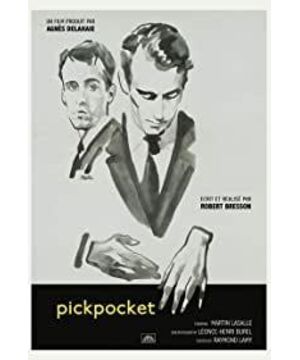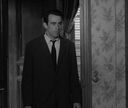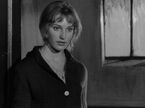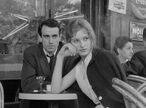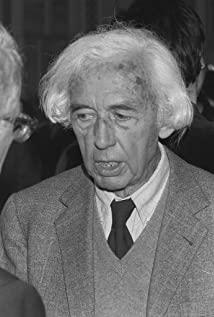Original link
How can I compare Bresson’s movies? They remind me of some kind of streamlined industrial product, with a wedge-shaped shell of toothpaste shell with half snow white and half silver gray. Among all the great directors who have left their name in history, Bresson is one of the few creators who has established aesthetic guidelines and followed these guidelines more seriously. He found a subtle cooperative relationship between the three incompatible texts, paintings and images. In the pre-Bresson era, people still thought that the movie was an operation: the characters must constantly wander, do something inconsequential, wait until the foreplay is done, and then suddenly elicit an action. The character is not allowed to perceive or react to an action (to let the character learn to see and feel, this is the progress of Hitchcock and Italian neorealism). But when it comes to Bresson, the text (narration) takes over the action, starting the movie with the text, and ending the movie with the text. To put it simply, Bresson, under the premise of following the perception-image, directly constructed the film with words. Note that it is words rather than literature. First-person, "only talking about oneself" words. Bresson said that the director does not need to try to convert the theme of the text into a sensible object in the movie. He said so and did so. According to Badiou's definition, the film lies between drama and novel, and this "Pickpocket" obviously launched an expedition in this direction. Each film is a response to the history of film criticism. This film allows us to see the success and failure of Bresson’s stylization attempts.
Pickpocketing is a behavior that can only be accomplished based on the mismatch of visual and tactile information between the two parties. Pickpockets have a clear advantage. They can see more, feel more, and even use their own sight and feeling to mislead the victim. It is impossible and unnecessary for the movie to present such a complex coordination and confrontation of pickpocketing in three dimensions. The director himself is like a pickpocket. He assigns some things that he thinks the audience should watch, and diverts our attention from the places that he thinks are not important. When Michel looked around at the racetrack, we couldn't see what he saw, but only his "look". Even Michel's face was drawn from the sight of a passerby. During the first burglary, you could not see your hands when you slap your hands, and you could not see your faces when you slap your hands. A shot is a quark. In the end, the quark was thrown into a composite particle composed of several hands and several faces. That's how it was done for the first burglary. Then all you have to do is to search for Michel from the large number of faces at the exit of the racecourse in a short time.
From the time Michel walked out of the police station for the first time to when he came home, it was nearly a minute. Still life has been given the same important status as the characters. The length and correspondence of the lens are exceptionally neat and precise. Obviously, Bresson here is practicing his own innovation in the grammar of film language. In his own words, a useless object may change its position and become useless. Similarly, when filming the dialogue, we are only allowed to see a face and a body parallel to this face. The body is like a wall that is near and far away.
In a place full of eyes like the subway, the camera zooms in cautiously, and the newspaper in the hand becomes smaller and smaller. It can be used as a cover for pickpocketing and may become a trouble. The narration paves the road, and the image builds the bridge. When facing the police for the first time, Michel hides in a cell-like rental house, and the noise of leather shoes touching the ground completes the narrative. Then there was the habitual thief who came out without any preconditions. This character is full of Satan's taste, and as soon as he comes out, he brings a discussion about death and faith. The relationship between the two triangular figures originally established on Michel has been broadened. With the addition of new characters, the plot line began to tighten. After the characters entered and exited the rental house again and again, the time in the film became measurable. This rental house is also triangular, with windows built on a sloping wall that is almost acute. In addition to the doors and windows, the rental house has only three things: a bed, a bookcase and a table. A geometric structure that lacks personality the most.
From the 46th minute to the 59th minute, the line of sight & body & the camera carried out a series of dazzling and carefully controlled synchronized movements, referring to Bataille's theory, here the line of sight = desire; body = energy, camera = center. The pickpocketing scene that was supposed to be presented as a complete unit was broken into pieces. In the process of Michel tracking, abandoning and re-locking the prey, the empty impressions that were photographed were transferred from the platform of the panoramic field to as if compressed by a certain machine. The camera continued to search for Michel and his companions among the same faces of each other. During these 4 minutes, the police were absent and the narrator was absent. The world has abandoned the image, and the image has lost its spirit. In many cases, after watching the complete film, the audience will find that they must assume that there are some images that have been cut out or abandoned to prove that the director really wants to express a certain "idea" seriously. For Bresson, if there is a loss, there is a gain. The extremely demanding standard for collecting visible objects reduces the loss of power. The power that originally escaped outside the image is returned to the image, ensuring that the subject becomes a measure of time. It is common to all things that claim to be modern art: humanity's wonder of existence.
The sudden acceleration of this wave slightly concealed the mistake of throwing death and religious imagery prematurely. However, pushing the rhythm too fast all at once exposed many problems. Michel and Jacques suddenly changed their roles, and Michel lacked foreshadowing to correct evil and reform. The prosecutor never arrested Michel. In fact, this early strategy of throwing the trap of catching the victim can be found in many Bresson films, such as "Muchette". If the prosecutor is a hunter, then Bresson is the second hunter. They cannot wait indefinitely for Michel as the prey to fall into the trap (return to justice). Therefore, there is an urgent need for a "will of the intermediary" to get the novel. The script inspired by the original author Dostoyevsky must neutralize the two conflicting logics that the prosecutor must arrest people immediately and Bresson does not want the film to end immediately. In order to break through the film's limitation between the realism of the plot and the realism of the outside, Bresson chose the text & narration, this "deformed" sound (the narration is not emitted from the scene, a ridicule of the dramatic sound). In the first 50 minutes of "Pickpocket", the image was taken as a sacrifice to the instantaneous text in Michel's diary, but after an hour or so, the text became an extra character in the image, and it did not appear when it should appear. Chattering when it's time to show up. Some critics who have studied the original novel pointed out that Dostoevsky's novel itself already contains too many "opposing movements", and the scenes added or modified by Bresson can only aggravate this division.
The scene where Michel and Jeanne embraced completely pushed the movie below the cliff. It is true that love is an experience that can only find form in the fiction of words, but Bresson is too confident. Michel was still criticizing Jeanne a second, and then Jeanne fell into his arms and gave a few words dry. The lines cannot build a solid emotional mechanism for the sacred inner experience of love, and this scene can be used as another evidence for anti-cinematists.
Most movies are a metaphor for memory and imagination, but Bresson's works are full of urgent postures of the human body, as well as personal requests and hopes for a part of a huge space. In Bresson’s films, we can often see a contradiction between a mechanical sense of reality and a cunning dramatic performance. This contradiction is derived from the "fable" defined by Aristotle: first knot a knot, then Solve this section. To this end, the director needs to arrange the necessary and realistic actions to make the characters' fate go up and down drastically. The central idea of this fable can always only be pointed out at the end, so the author must focus on the plot (pathos) and light on the appearance (opsis). Bresson tried to achieve both. This was a brave attempt, but it did not get what he wanted this time.
Bresson said that he hoped that his movie would be like a painting that was slowly completed in his eyes. The camera's mode of shooting scenes is a passive mechanical reproduction. In order to meet Bresson's requirement of "collecting natural fragments from oil canvas", photographers and playwrights must work together to liberate the picture from the narrative from time to time. Bresson put forward a famous concept of "unexpected encounter": "Don't look for it, but wait."
A great example I think of now is in the 87th minute of "Death Row Prison Escape", Fontaine hides behind a wall and prepares to attack the German sentry. He stood for half a minute with his hands on his chest and the camera zoomed in. There was nothing else. Body movements and facial expressions, the narration is "I want to use my hands to control my heartbeat." If someone asks me to use a lens to summarize Bresson’s movies, it’s this. Art in the aesthetic age and everything can become art. I don’t know if this stance is Bresson’s design or the actor’s on-site performance. It’s important What’s more, it’s such a standing posture that lasted for half a minute and the only narration that perfectly matched Hegel’s "conscious and unconscious identity is the only law of art." What’s more, this half-minute automatism (Separate the image from the movement) It does not disturb the narrative itself at all.
If Bresson’s films are all shortcomings, then there is at least one advantage, which is that they are very pure in sense of hearing. Noise and speech are the only sounds that can ensure that they don't conflict with the video, so they have their due reservations. In "Pickpocket", the crisp noise of leather shoes on the ground is everywhere, making up for the limitations of the situation and the characters. In "Film Notes", Bresson expressed his vigilance on music more than once. Of course, there are still very appropriate music applications in Bresson's films, but music is only used to fill the gaps between images.
The sound, which is a derivative of movement, is stripped from space, stabilizing time. Silence represents a gift of divine will soothing the despair of the image. This practice of setting up a special role for the voice is not to pursue an absolute neutral narrative possibility, but to follow the opposition of the two logics mentioned above. This kind of sound peculiar to Bresson's work is called a "white" sound by critics. The text uses a passive way to avoid the potential conflict between the natural development of the event and the director's will. Instead, the addition of the image to the text is called a subtraction of perception. In Bresson's own words, the role of sound and picture should be alternate. He doesn't think that people can do two things at once, and appreciate the picture and sound at the same time. The sound is inside and the image is outside. More than sound is words. The diversified processing of sound represents a leap in modern digital technology. For this technological advancement, Bresson has always adhered to the bottom line. I re-watched "Carmen" not long ago, and suddenly felt that the first-line director who resembled Bresson in sound and picture was actually Gundam.
Bresson is Heidegger who made the film and does not accept rebuttal. The key concept of existence-phenomenology: "reduction"-the reduction of all created things from phenomenon to essence. As a kind of "given nature", the essence must be "obvious." In other words, phenomenon precedes existence. Bresson said "the movie does not present what it does, but what it presents." Since pickpocketing only requires hands, then only shoot hands. However, Bresson is not a layman. He said that the film should not be too succinct, "neither too orderly nor too disorderly". Heidegger challenges Husserl because he believes in the "clear view". There is also a hidden kingdom of beings. He mentioned the earth and poetic contemplation. Correspondingly, Bresson said that the beauty of the movie should be the beauty that a person experiences when stepping into the unnamed countryside. For us, the movie is probably just a memory of the short accompanying time. In order to avoid forgetting, the movie needs a sensible theme. The movie is an abrupt rotation that must end before reaching 180 degrees. Let us review some of Bresson's seemingly self-contradictory tenets: the camera should capture an impression, a throbbing, but avoid all human intervention "images" or specious "realness".
We are living in an era when too many themes are given. Every picture, every paragraph of text is equivalent to a certain topic. I remember I saw a certain picture and read a certain section of text. However, when I use these clues to search for this picture or this section of text, not only can I not directly find the target, but on the contrary, it will constantly be poured out. Interfered by other pictures and text. This loss of not being able to find the subject makes it difficult for our overactive brains to calm down. Our vain emotions are consumed in these things that we are destined to be impossible to own, things that we are destined to be unable to control. We began to take things that were not created for us as what we deserve, because we have always believed that this world is equivalent to what I see. With this inverted psychology, we always overestimate movies. We believe that movies have an obligation to establish a new order for the world, or invent some new values to please the audience. In Western European languages, "occurrence" and "through" are both the same word. Badiou asked, why do we watch movies so seriously? The movie is nothing more than a passing and a visit of montage to a certain subject. The camera continuously allows the audience to see the appearance of being "seen" by it.
In Bresson's films, whether the camera "sees" a mountain, a donkey or a rape, the poetic convergence between all appearances is always higher than the difference in appearance. To give a not the most appropriate analogy, this is like looking at the two girls in "Girls of Avignon", according to Gertrude Stein's words, "there are only the nuances of the face, and everything else is exactly the same" ( Although their eyes are tilted to two different angles, Picasso maintains an underestimated sense of integrity with the reflection of shadows). The structure and logic of things and behaviors are as concise as possible, so that some unconscious things can be highlighted. As an art of creating a pure space for the theme to explore the visibility of the world in which it is located, the appearance and space in the film act like a filter on the characters and time. Why are Bresson’s best films about monasteries and prisons? Because people enter the monastery, they must practice, and they must serve the sentence when they enter the prison. Instead of entering a mansion, they can choose to play the piano or drink cocktails. This is the biggest and possibly the only difference between Bresson and Bunuel.
This is why it is difficult for us to tell at a glance which very classic scenes are in Bresson's movies, but we can quickly identify which faces appeared in Bresson's movies. In fact, when watching most movies, I either feel that my thinking is too fast, so that if I don’t pause the screening, I can’t record the basis laws that I have observed from a certain scene or a certain sound and picture agency. , But when I watched Bresson’s movies, I felt that I was relaxed a lot. In fact, when I was writing this article, I still felt that my hands could not keep up with my thinking. I had a lot of thoughts before I could print them. Forgotten. Those who know how to do it should know that when the first sight of the "models" in Bresson's films who were nervous when shooting relatively long rival scenes, the intention of this well-designed sense of alienation was revealed: We may forget an idea in our mind, but we never have nothing to do. This involves a very old question, whether we think about it first, or think about it first. If there is a scene where a character thinks in the movie, would you first guess what the character is thinking, or will you concentrate on observing the scene itself? At least, I believe that first-class directors will not add a subjective lens to the back.
Movies are projections and imitations, first they project and imitate objects and lines in the world, and then the world. There is more than one world, and movies are still far from extinction. I just saw a middle-aged man in the community saying to his raised Bian Mu, "There is a plane passing by in the sky." A gaze, a dialogue, a subject, a burst of noise, two objects, three perspectives, isn't this a movie? The movie has indeed reached its limit, but the movie will not die, and those who do not move "the movie is dead" will definitely die.
View more about Pickpocket reviews


